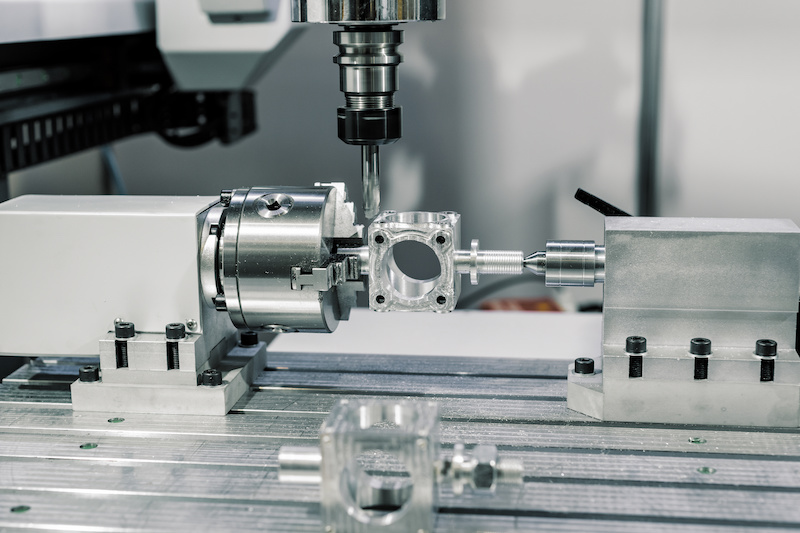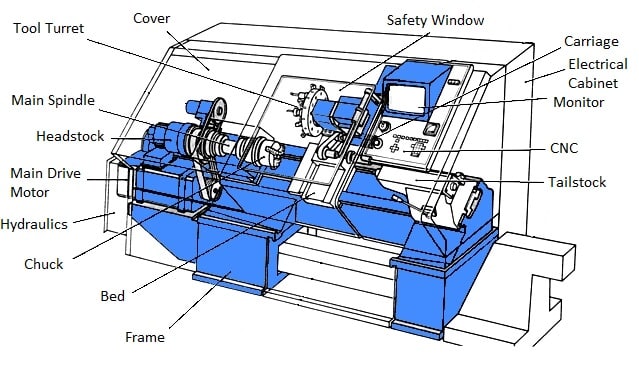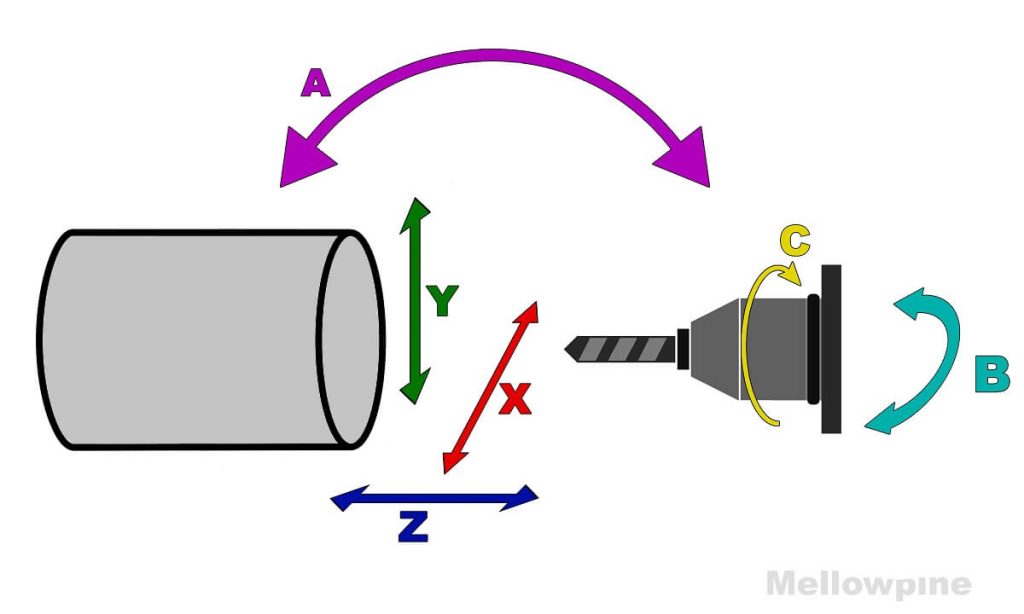Table of Contents
CNC lathe machines are a crucial component in modern machining. They have revolutionized the manufacturing industry, making it easier to produce high-quality parts and components with precision and accuracy. However, operating a CNC lathe machine can be challenging, especially for beginners. In this article, we will guide you on how to operate a CNC lathe machine, providing you with the necessary skills to operate it efficiently and effectively.
Whether you’re a seasoned machinist or just starting, understanding the basics of a CNC lathe machine is crucial. From the machine’s layout to its various components, there are several factors to consider when operating one. We will delve into the essential elements of a CNC lathe machine, including how to set it up, load the material, and run the program to produce the desired part. So, let’s get started and explore the world of CNC lathe machines together.
Operating a CNC lathe machine requires the following steps:
- Prepare the machine by checking the coolant, chuck, and tools.
- Load the material onto the chuck and secure it.
- Set the tool offsets and program the machine using G-code.
- Start the machine and monitor the process.
- Inspect the finished product for accuracy.
How to Operate a CNC Lathe Machine?
If you’re looking to operate a CNC lathe machine, you’ve come to the right place. In this article, we’ll guide you through the steps you need to follow to get started on this exciting journey. With a bit of practice, you’ll be able to create precise and intricate designs with ease.
1. Safety First
Safety should be your top priority when operating a CNC lathe machine. Before you start, make sure you’re wearing the appropriate protective gear, such as safety glasses and gloves. Additionally, ensure that the machine is properly grounded and that all guards are in place.
Once you’ve taken these precautions, you can power up the machine and begin your work. However, it’s important to always remain alert and aware of your surroundings. If you notice any issues or abnormalities, immediately shut off the machine and investigate the problem.
2. Familiarize Yourself with the Machine
Before you start using the CNC lathe machine, take some time to familiarize yourself with its features and controls. This will help you operate the machine more efficiently and avoid any mistakes.
Start by studying the machine’s manual and identifying the various parts and components. Then, practice using the machine’s controls until you feel comfortable with them. Make sure you understand the different modes of operation, such as manual mode and automatic mode.
3. Set Up Your Workpiece
Once you’re familiar with the machine, you can begin setting up your workpiece. This involves securing the material you’ll be working on in the chuck, which is the device that holds the material in place during machining.
Make sure the workpiece is centered and secured tightly in the chuck. You can use a dial indicator to check that the workpiece is properly aligned.
4. Choose Your Tools
Selecting the right tools is crucial for achieving the desired results. CNC lathe machines have a variety of cutting tools available, including drills, boring bars, and turning tools.
Choose the appropriate tool for the job and ensure it’s securely fastened to the tool holder. You can use a tool presetter to measure the tool’s length and diameter accurately.
5. Set Your Parameters
Before you begin machining, you’ll need to set your parameters. This includes selecting the appropriate speed and feed rate for the material you’re working on.
You should also set the depth of cut and the tool path. This can be done using the machine’s control panel, which allows you to input your desired parameters.
6. Start Machining
With your workpiece, tools, and parameters in place, you’re ready to start machining. Begin by running a test cut to ensure everything is working correctly.
Then, initiate the machining process and monitor the machine closely. Make adjustments as necessary to ensure the desired results are achieved.
7. Inspect Your Workpiece
Once you’ve completed the machining process, it’s essential to inspect your workpiece. This involves measuring the dimensions and ensuring they’re within the required tolerances.
You should also check for any surface defects or other imperfections. If necessary, make any necessary adjustments and repeat the machining process until the desired results are achieved.
8. Maintain Your Machine
To ensure your CNC lathe machine continues to perform at its best, it’s essential to maintain it properly. This includes regularly cleaning and lubricating the machine, as well as replacing any worn or damaged parts.
You should also perform regular calibration and alignment checks to ensure the machine is operating accurately. Following a maintenance schedule can help prevent unexpected downtime and prolong the machine’s lifespan.
9. Benefits of Using a CNC Lathe Machine
Using a CNC lathe machine offers numerous benefits. For one, it allows for precise and accurate machining, which is essential for creating complex designs.
Additionally, CNC lathe machines can operate continuously without the need for manual intervention, allowing for increased productivity and efficiency. They’re also versatile and can be used to work with a wide variety of materials.
10. CNC Lathe Machine vs. Manual Lathe Machine
While both CNC lathe machines and manual lathe machines can be used for machining, there are several differences between the two. CNC lathe machines offer greater precision and efficiency, while manual lathe machines require more skill and experience.
Additionally, CNC lathe machines can operate continuously without the need for manual intervention, while manual lathe machines require constant monitoring and adjustment. Overall, CNC lathe machines are better suited for high-volume production and complex designs, while manual lathe machines are more appropriate for smaller-scale projects.
In conclusion, operating a CNC lathe machine requires careful attention to safety, familiarity with the machine’s features and controls, and a solid understanding of the machining process. By following the steps outlined in this article, you can begin using a CNC lathe machine with confidence and start creating precise and intricate designs.
Frequently Asked Questions
Here are some commonly asked questions about how to operate a CNC lathe machine:
What is a CNC lathe machine?
A CNC (computer numerical control) lathe machine is a type of equipment that is used to produce complex parts and components with high precision. The machine is operated by a computer program that controls the movement of the cutting tool along the spinning workpiece. CNC lathe machines are widely used in manufacturing industries to produce a range of products, from medical devices to aerospace components.
Before operating a CNC lathe machine, it’s important to have a good understanding of its basic components, such as the spindle, chuck, tool turret, and control panel. You should also be familiar with the programming language used by the machine, such as G-code or M-code.
What are the safety precautions to take when operating a CNC lathe machine?
Operating a CNC lathe machine can be dangerous if proper safety precautions are not taken. Here are some safety tips to keep in mind:
1. Always wear appropriate personal protective equipment (PPE), such as safety glasses, gloves, and earplugs.
2. Keep the work area clean and free of clutter to avoid tripping hazards.
3. Do not touch the machine while it is in operation.
4. Always follow the manufacturer’s instructions for operating the machine.
5. If you notice any unusual sounds or vibrations, stop the machine immediately and investigate the issue.
How do you set up a CNC lathe machine?
Setting up a CNC lathe machine involves several steps, including:
1. Mounting the workpiece on the chuck and securing it in place.
2. Installing the cutting tool in the tool turret and adjusting its position.
3. Setting the spindle speed and feed rate based on the material being machined.
4. Loading the appropriate program into the machine’s control panel.
5. Checking the machine’s alignment and making any necessary adjustments.
Once the machine is set up, you can begin the machining process by running the program and monitoring the machine’s operation.
How do you troubleshoot common problems with a CNC lathe machine?
Common problems that can occur when operating a CNC lathe machine include tool breakage, poor surface finish, and incorrect dimensions. Here are some troubleshooting tips:
1. Check the tool holder and make sure it is tight and clean.
2. Adjust the cutting speed and feed rate to improve surface finish.
3. Verify the program code for any errors or typos.
4. Inspect the workpiece for any defects or inconsistencies.
5. Check the machine’s alignment and make any necessary adjustments.
If you are unable to resolve the issue, consult the manufacturer’s troubleshooting guide or contact a qualified technician for assistance.
What are the benefits of using a CNC lathe machine?
Using a CNC lathe machine offers several benefits, including:
1. Increased precision and accuracy in machining complex parts.
2. Improved efficiency and productivity due to the ability to run multiple programs simultaneously.
3. Reduced labor costs and operator fatigue.
4. Consistent quality and repeatability of parts.
5. Greater flexibility in design and customization options.
Overall, a CNC lathe machine is a valuable tool for any manufacturing operation that requires high precision and efficiency in part production.
In conclusion, operating a CNC lathe machine may seem daunting at first, but with the right knowledge and practice, anyone can become proficient at it. Remember to always follow safety protocols and take the time to understand the machine’s capabilities and limitations. With patience and attention to detail, you can create precise and intricate parts with ease.
Furthermore, it is crucial to stay up-to-date with the latest technologies and advancements in CNC machining. Attend workshops, read industry publications, and network with other professionals to stay ahead of the curve. This will not only enhance your skills but also increase your value as a machinist in the job market.
Finally, don’t be afraid to experiment and try new things. CNC lathe machines offer endless possibilities and can be used to create a wide range of parts and products. With creativity and innovation, you can take your machining skills to the next level and achieve exceptional results. So, go ahead and explore the world of CNC machining – the possibilities are endless!
Request a quote today!
[contact-form-7 id="1578" title="Contact form"]
Please compress the file into a ZIP or RAR file before uploading. Alternatively, send through your RFQ by email.
enquires@unitymanufacture.com





